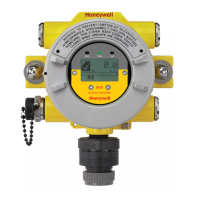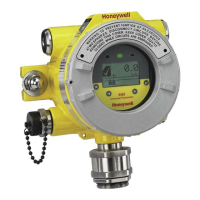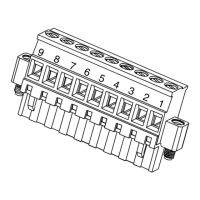XNX Universal Transmitter
Introduction
13
Patents
Patents Applicable to the XNX Universal Transmitter
Patent
Number
Description Application
6,123,818 Reflex patent Implemented in XNX
6,251,232 Reflex patent Implemented in XNX
6,351,982 Flammable sensor housing XNX accepts this sensor
6,395,230 Pellistor Sensor used in XNX
7,225,661 Gas calibration adapter Applicable to XNX
7,716,962 Method of gas calibration Used to calibrate XNX ECC cartridges
Glossary
Term Description
bump test
a brief exposure to a gas to verify that a detector is working;
also known as a functional test
ferrite bead a device that suppresses noise in a circuit
FOUNDATION Fieldbus
an open architecture, digital, serial communication system
administered by the Fieldbus Foundation
HART Protocol
Highway Addressable Remote Transducer Protocol; a bi-
directional analog communication system developed by the
HART Communication Foundation
intrinsic safety
design parameters for the safe operation of electrical equip-
ment in hazardous environments; commonly abbreviated IS
IP rating
Ingress Protection; a system for describing a device’s protec-
tion against dry materials and liquids (e.g., IP66/67)
latching alarm an alarm that, once activated, must be manually reset
magnetic wand a small device used to change the transmitter’s settings
Modbus a digital communications protocol based on RS-485 topology
non-latching alarm
an alarm that automatically resets when the cause of the
alarm is removed
pellistor/bead an electronic device used to detect combustible gases
personality board
a component of the transmitter that allows its operation to
focus on different sensing technologies
POD
Personality, Options, and Display; the group of components
including an XNX transmitter’s personality board, display, com-
munication board, etc.
span calibration
adjustment of a detector so that its scale corresponds to a gas
concentration range from 0% to 100%
sticky gases gases that tend to coat the surfaces they contact
toxic gases
gases that are poisonous to humans (refer to the gas’s Safety
Data Sheet for details)
zero calibration
adjustment of a detector so that its zero reading corresponds
to a test gas concentration of 0%

